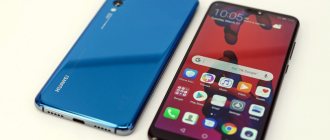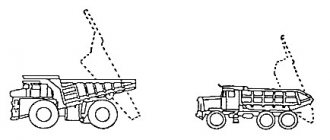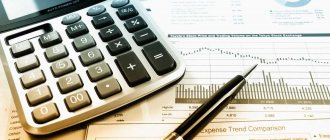In the conditions of modern competition, our domestic industry in many areas is far behind its foreign competitors. This situation has also developed in the segment of personal computers, printers, consumables and cartridges for them.
Therefore, it is no secret to anyone that almost all printers are imported to us from the EAEU countries. All products imported into the country receive their own individual and unique HS code. It is by this code that customs and cargo owners calculate and pay customs duties and other payments. The correct and correct assignment of HS codes is, first of all, important for importers, since with the slightest discrepancy, the period for obtaining an import permit can take a long time.
Coding of goods in the general list of the Commodity Nomenclature of Foreign Economic Activity of the Customs Union
Each product or group of products with the same characteristics has its own individual HS code, which is 10 or less often 14 characters long. According to this code, EAEU customs declarations undergo automated calculation for payment of fees.
Structure of the Commodity Nomenclature of Foreign Economic Activity
The product coding can be deciphered according to the following criteria:
- The first two digits from the beginning are the product group corresponding to the classifier;
- The first four digits from the beginning are the name of the product;
- The first six digits from the beginning are clarifying data on subitems;
- Ten digits of the code – fully encrypted information about the product for automatic payment calculation.
HS codes
9031 - Measuring or controlling instruments, devices and machines, not specified or included elsewhere in this chapter; profile projectors:
| 9031 | Measuring or control instruments, devices and machines, not specified or included elsewhere in this group; profile projectors: |
| 9031 10 000 0 | – balancing machines for mechanical parts |
| 9031 20 000 0 | — test stands |
| — optical instruments and other devices: | |
| 9031 41 000 0 | — — for the inspection of semiconductor wafers or devices or for the inspection of photomasks or photomasks used in the manufacture of semiconductor devices |
| 9031 49 | - - other: |
| 9031 49 100 0 | — — — profile projectors |
| 9031 49 900 0 | - - - others |
| 9031 80 | - other instruments, devices and machines: |
| - - electronic: | |
| — — — for measuring or monitoring geometric quantities: | |
| 9031 80 320 0 | — — — — for testing semiconductor wafers or devices or for testing photomasks or photomasks used in semiconductor device manufacturing |
| 9031 80 340 0 | - - - - others |
| 9031 80 380 0 | - - - others |
| - - other: | |
| 9031 80 910 0 | — — — for measuring or monitoring geometric quantities |
| 9031 80 980 0 | - - - others |
| 9031 90 | - parts and accessories: |
| 9031 90 100 0 | - - instruments, devices and machines of subheading 9031 80, intended for civil aviation |
| 9031 90 200 0 | — — — for equipment of subheading 9031 41 000 0 or for optical instruments and devices for measuring surface contamination by particles of semiconductor wafers of subheading 9031 49 000 0 |
| 9031 90 300 0 | — — — for equipment of subheading 9031 80 320 0 |
| 9031 90 850 0 | - - - others |
In addition to profile projectors, this heading covers measuring and control instruments, fixtures and machines, including optical ones.
It should be noted, however, that this heading does not include instruments, apparatus, etc., included in headings 9001-9012 or 9015-9030; and also excludes the following: (a) Astronomical instruments of heading 90.05.
(b) Microscopes (heading 9011 or 9012).
(c) Instruments and appliances for topographical surveying, etc., of heading 90.15.
(d) Length measuring instruments intended for manual use (heading 90.17).
(e) Medical, surgical, etc. instruments and accessories of heading 9018.
(e) Machines and apparatus for testing the mechanical properties of materials (heading 9024).
(g) Flow meters, etc. heading 9026.
(h) Instruments and apparatus for measuring and monitoring electrical quantities and instruments and apparatus for measuring and detecting ionizing radiation of heading 9030.
(i) Instruments and apparatus for automatic regulation and control (heading item 9032).
(I) Measuring and control instruments, fixtures and machines
(A)
These include:
(1) Machines for balancing mechanical parts (dynamic, static or electronically balanced), such as armatures, rotors, crankshafts, connecting rods, screw shafts, wheels, flywheels.
In dynamic machines, parts rotate on two bearing frames or between centers, and the imbalance is measured mechanically (by tracing diagrams on a recording plate, by the principle of balancing a spring, etc.).
Static balancing machines operate on the swing principle, the imbalance is measured on linear or circular scales. They differ from dynamic machines in that the part being balanced does not rotate.
The imbalance is compensated either by counterweights or by material removal.
On machines equipped with an electronic balancing device, vibrations caused by asymmetry are detected by a special sensitive element and then amplified.
This heading also covers balancing machines installed with metal-cutting machines (for example, drilling machines) and used solely to correct imbalances.
(2) Test benches for engines and motors, electric generators, pumps, speedometers, tachometers, etc., consisting of a frame and a measuring or calibrating device.
(3) Laboratory apparatus of the type used for testing fuels and especially for measuring the octane number of kerosene or the ketane number of diesel fuels. These devices usually consist of an internal combustion engine, a dynamo, an ignition generator, heating resistors, and measuring instruments (thermometers, pressure gauges, voltmeters, ammeters, etc.).
(4) Apparatus for testing and regulating automobile engines, for monitoring all parts of the ignition system (inductors, spark plugs, capacitors, batteries, etc.), to determine the best carburetor setting (by exhaust gas analysis) or to measure the compression ratio in cylinders.
(5) Planimeters for measuring flat areas (for example, on plans, diagrams, skins or hides). The tracking point, in combination with a measuring device, follows the contour of the area being measured.
Integrators, harmonic analyzers and other instruments are based on the planimetric principle and can measure other factors (for example, volumes, moments of inertia).
(6) Head contour gauges used by hatters, which operate by perforating a sheet of paper.
(7) Comparators with dial indication, micrometric devices, electronic, optoelectronic and pneumatic sensors, including automatic ones, as well as all devices and instruments for measuring length, angles and other geometric quantities using such sensors. This heading also covers recording comparators and comparators equipped with a mechanical device that transports mass-produced parts to the comparator and removes defective parts.
However, this heading does not include dial comparators intended for use in the hand (manual use) and described in paragraph (4) of part (D) of the Explanatory Note to heading 9017 (see exception (d) above).
(8) Measuring posts for checking precision squares, heights or for other checks during production processes.
(9) Sine rods and sine rods with adjustable table for angle control.
(10) Bubble spirit levels used in many trades, including micrometer adjustable spirit levels (bubble spirit level with a built-in micrometer), block spirit levels (a metal frame with two spirit levels) used in engineering, and liquid spirit levels based on the principle of communicating vessels.
It should be noted that this heading does not include spirit levels specialized for the purposes of topographic surveying (heading 90.15).
(11) Clinometers (with arrows or grids, ruler clinometers, protractor clinometers) for monitoring the level relative to a horizontal plane or for measuring the inclination of a surface.
However, instruments, also called clinometers, used in topographic surveys to calibrate the elevation of terrain are not included here (heading 90.15).
(12) Plumb lines.
(13) Spherometers for measuring the curvature of spherical surfaces (lenses, mirrors, glasses lenses, etc.). They consist essentially of a base with three pins (at angles corresponding to the angles of an equilateral triangle), a dividing ruler and a micrometer screw with a feeler gauge. Other types of instruments (optical lens meters) may be equipped with a dial scale to indicate the curvature directly.
(14) Control standards.
(15) Multidimensional measuring equipment, including coordinate measuring machines, used to perform dimensional inspection, either manually or mechanically, on various machine parts.
(16) Machines used by opticians for alignment and designed to determine and mark the axis and center of a lens.
(17) Micrometric reference measuring machines based on the micrometer principle. They consist of a fixed tailstock (with contact indicator) and an adjustable headstock with a micrometer screw.
(18) Apparatus for measuring and detecting vibration, expansion, impact and rattling, used in machine tools, bridges, dams, etc.
(19) Apparatus for the control of textile materials, for example, yarn sorting winding reels (main reels) designed to obtain a specific length of yarn or strand of wool (including tension regulator, counter and bell); torsiometers and torsiographs for determining yarn torsion; tensiometers for measuring yarn tension on textile machines (warping, winding, spinning, etc.); devices for controlling the regularity of yarn by winding it on a drum or board, usually containing a device for controlling the intervals between turns.
(20) Surface finishing testers and surface condition calibration machines.
In instruments of mechanical and pneumatic types, calibration is performed using a solid contact pointer or air jets.
In electrical type instruments, a sapphire or diamond sensor moves across the surface being tested and converts any irregularities in that surface into electrical potential. Vertical movements of the sensor are converted into electrical potential using a piezoelectric crystal or indirectly when they change the capacitance of a capacitor or the inductance of a coil. This electrical potential is then amplified and measured. Comparison of the measurement with readings obtained through the use of selected surface roughness standards (small metal plates supplied for this purpose) provides a measure of the condition of the surface being tested.
(21) Gear testing machines that use, for example, a linkage booster system to test patterns, diametric pitches, tooth spacing and roller contacts, etc. (on spur gears and bevel gears), pitch, etc. (on helical gears, on worm gears).
(22) Instruments for measuring the shrinkage of clay, etc. test sample taken from a ceramic kiln during firing to determine the progress of firing (pyroscopes). These instruments are often similar to calipers, but are calibrated in arbitrary units.
(23) Instruments for measuring irregular surfaces (such as skins and skins) using a photoelectric process (the difference in photodiode current depends on how uniformly the illuminated sheet of glass is covered by the opaque surface being measured).
(24) Instruments for measuring the diameter of a filament using a photoelectric process as described in paragraph (23) above.
(25) Instruments for continuous measurement and control of the thickness of metal sheets or strips in rolling mills, etc.
(26) Ultrasonic thickness measuring instruments, which allow the thickness to be determined by observations made on only one side of the material.
(27) Instruments for detecting breaks, ruptures, cracks and other defects in materials (rods, tubes, profiles, machined products such as screws, needles, etc.). They operate either by observing a pattern on a cathode ray screen resulting from magnetic changes, by directly reading changes in magnetic permeability indicated on a graduated scale, or by using ultrasonic waves. The latter group includes ultrasonic instruments for the inspection of soldered or welded joints, which operate on the principle that any discontinuity in the medium through which ultrasonic waves pass deflects the beam. Defects can be measured either by observing beam attenuation or by reflection techniques. Observations can be made on the screen of a cathode ray tube.
(28) Special instruments for checking watches or watch parts. These include:
(i) Instruments for checking hair springs.
(ii) Amplitude meters to monitor the amplitude of oscillation of the balancer. The light beam, interrupted by the movement of the balancer, is projected onto a photodiode, which gives a measure of amplitude.
(iii) Oscillometers for testing and monitoring complete watch movements. The clock mechanism is placed on a microphone, and each tick of the clock creates a potential that is amplified and applied to two electrodes. One of the electrodes is equipped with sharp tips, which thus perforate the recording on the paper tape.
(iv) Instruments for final control of watches. They operate on the same principle as oscillometers (recording the ticking of a clock placed on a microphone), but can also be equipped with a cathode ray oscilloscope.
(29) Special electrical instruments for measuring stress and strain. They are based, for example, on the following principles:
(i) Change in resistance of the wire subjected to stress (strain measuring instruments). However, electrical resistors, known as "strain gauges", fall in heading 85.33.
(ii) Changing the capacitance between specially designed electrodes.
(iii) Electrical potentials created by quartz or similar crystals under pressure.
This group of products also includes dynamometers used for measuring compression under the action of traction force of hydraulic presses, rolling mills, materials testing machines, etc., as well as for load testing (aircraft). They usually consist of a metal body (cylinder, ring, etc.) to which a load is applied, and a measuring apparatus, graduated in units of weight, which records all changes in the shape of the metal body.
However, dynamometers for testing the properties of materials are excluded (heading 9024).
(30) Load elements that convert changes in applied force (including weight) into proportional changes in stress. These voltage changes are usually detected by measuring, control, weighing, etc. instruments. and are expressed in the required units.
(31) Electronic chronographs and chronoscopes for measuring the duration of electrical contact. They consist of a capacitor, which is charged through a high resistance while the contact is closed; the measurement is carried out using a lamp voltmeter calibrated in time units.
(B)
This heading also covers measuring and control devices and instruments of the optical type, such as:
(1) Optical comparators or comparators with a graduated scale to control the dimensions of the manufactured part in comparison with the reference; the movement of the probe is increased by an optical device (rotating mirror principle).
(2) Comparator stands for monitoring elongation, length, surface, etc. They contain a table and frame, a sliding carriage and two mounted micrometer microscopes.
(3) Measuring stands for large parts, thread gauges, modular cutters, threaded shafts for lathes, crossbars, etc. They contain a frame and table, a viewing microscope, two micrometer microscopes, and a projection apparatus.
(4) Interferometers for testing flat surfaces. They are based on the principle of light interference and contain a standard optical plate and lenses with micrometric crossed filaments to measure interference fringes. However, this heading does not include standard optical plates for monitoring shape and surface finish (heading 9001) and interferometers for measuring refractive indices (heading 9027).
(5) Optical instruments for testing the condition of surfaces using a combination of prism and lens.
(6) Apparatus equipped with a high-speed pulse differential probe and an optical viewing device for photographic recording and measurement of profiles and surface conditions.
(7) Straightening telescopes for checking the straightness of stands and supports of machine tools and measuring metal structures. They operate on the basis of collimation and autocollimation and contain a telescope and a collimator or mirror.
(8) Optical rulers for measuring deviations from the plane; they contain a hollow ruler with a prism and lens at each end and a micrometer with an eyepiece containing a feeler gauge.
(9) Micrometric reading devices for monitoring the movement of tables of metal-cutting machines; they contain a micrometer device for reading millimeter divisions on individual scales.
(10) Optical goniometers or angle calibration devices designed to monitor the sharpening angles of teeth or blades (rake angle) during sharpening. They contain either an optical device with a lens and mirrors and a dial for reading the angle of incidence, or an obturator system with a mirror and an adjustable eyepiece.
(11) Focal length meters for measuring spectacle lenses.
The apparatus and appliances listed above are also classified in this heading, whether or not they are suitable for installation on machinery.
It should be noted, however, that heading 84.66 covers devices for adjusting workpieces or cutters on metal-cutting machines, including "optical" devices (for example, "optical" dividing heads and "optical" circular tables) containing optical devices to facilitate the reading of scales. , making adjustments, etc.
(II) Profile projectors
Profile projectors used to control the shape and size of various objects (workpieces cut to shape, gears and gear rollers for small mechanisms, screws, taps, threaders, etc.) or for examining surfaces. In most of these projectors, the light from the lamp is collected into a beam by a condenser before being directed onto a sample placed on a stand. The beam outlines the silhouette of the sample and, after several reflections, is finally projected by a set of prisms onto a screen, which is usually built into the projector. Some of these projectors come with an intermediate stand on which the reference piece is placed.
Parts and Accessories
Subject to the provisions of Notes 1 and 2 to this Chapter (see General Explanatory Notes), this heading also covers parts and accessories identifiable as being suitable for use exclusively or principally with the machines, apparatus and apparatus described above, e.g. planimeter arms, stands and check tables for dial comparators.
Explanations for subheadings
Subheading 9031 49
This subheading includes not only instruments and apparatus which directly aid or contribute to human vision, but also other instruments and apparatus which operate through the use of optical elements or processes.
Explanations to the subheading
9031 20 000 0
Test stands for testing fuel injection pumps of diesel engines have all the main components that are installed on the stand, an electric motor and a device that includes injectors and graduated glass tubes for testing the performance of injector elements. The stands can be additionally equipped with an auxiliary device (strobe light) to check the precise timing of fuel injection.
9031 80 320 0 and 9031 80 340 0
Examples of measured geometric quantities are: length, distance, diameter, radius, curvature, angle, slope, volume, surface roughness.
These subheadings do not include interferometers for monitoring the smoothness of surfaces used in laboratories (subheading 9027 50 000 0)
9031 80 910 0
See Explanatory Notes to subheadings 9031 80 320 0 and 9031 80 340 0
This subheading includes alcohol meters.




